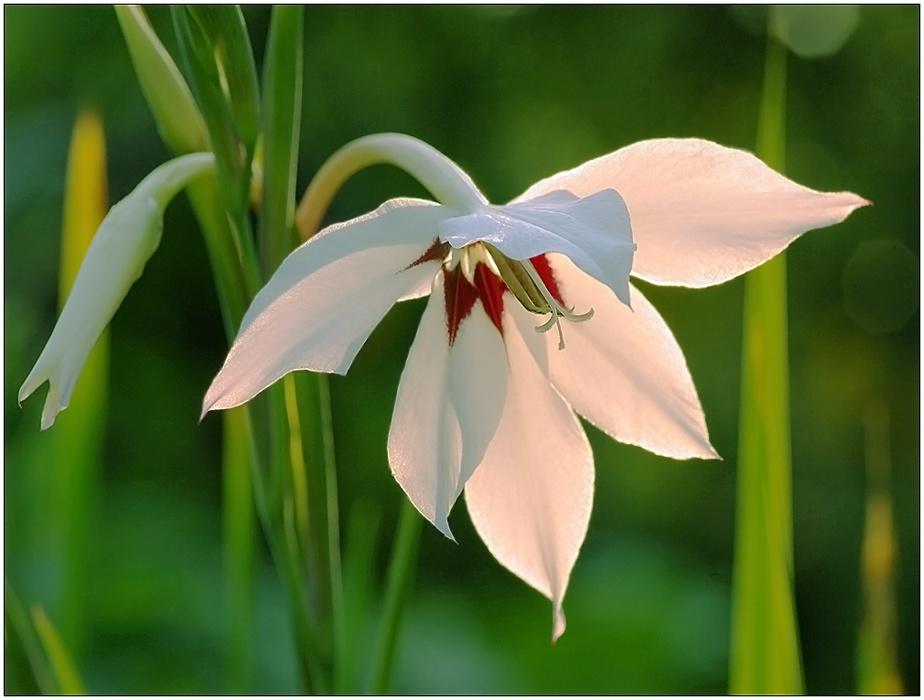The first impression of this flower is multifaceted, it seems that we have already seen it. Some people confuse it with narcissus, perhaps because of the similarity in taste. The second name of acidantheria is sweet-scented gladiolus. By the way, there are about 40 types of Acidanthera. It belongs to the family iridaceae of the genus Irises.
Atcidanthera is a flower with a thin, delicate stem and the same elegant large flowers about 10 cm (3.9 inch) in the shape of a star. The color can be pale white or light purple with dark purple in the center (two-color acidanthera). The most common species is Acidanthera bicolor, grown as an annual.
Breeding
Like gladiolus, Acidanthera reproduces by corms, babies, and seeds.
Using seed propagation, gardeners have to wait a long time for the plants to bloom, so this method is rarely used by gardeners. But if you still decide to do this work, then you should understand that the plants are planted in seedlings in February-March in a rich soil with fertilizers, and it is also best to plant it in a greenhouse at a temperature of 20-25 °C (68-77 °F).
For reproduction, they are planted in the garden in the spring in the cracks, placing the seedlings in loose soil. Seedlings need to be confidently weeded, watered, loosened the soil and dug out for the winter. After 2-3 years, the tubers are ready to give flowers. It is not superfluous to feed the soil with mineral and organic fertilizers. You can take a tincture of mullein.
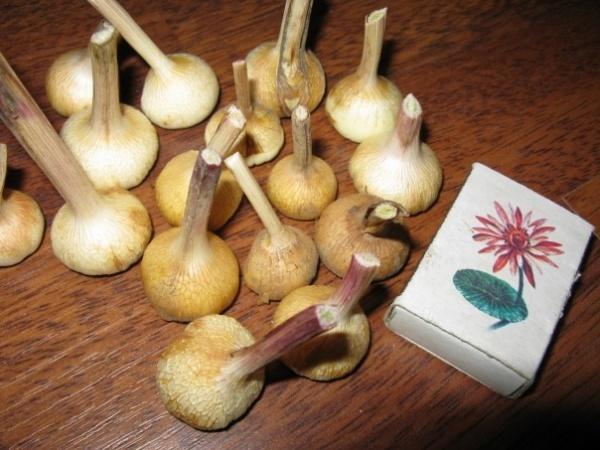
Planting of Acidanthera
Due to the fact that this flower is widely distributed in nature in Africa, it likes full sun and without strong winds. It grows well in drained, neutral or slightly acidic soils. The soil for this flower should be moist, for this after planting it can be mulched with the same peat. Watering the acidanthera is also not recommended to avoid stagnation of water and rotting of the bulb. Before planting, mineral and organic fertilizers are applied to the soil to get a good flowering and growth of the flower bulb.
Acidanthera at the beginning of flowering, it can be planted in pots in March and grown in a heated greenhouse, on a windowsill or planted in the garden. Acidanthera is very susceptible to putrefactive diseases, so it can and should be treated with fungicides. Plant to a depth of about 10 cm (3.9 inch), at a distance of about 20 cm (7.9 inch), depending on the size of the bulbs.
Care for Acidanthera
If you are going to grow a flower at home and immediately plant it in the ground, then you need to hide it when it gets a little colder. In winter, the tubers are covered with dry leaves or peat. During the growing season, you need to apply fertilizers 2-3 times and the flower will be the most beautiful, the inflorescences that have faded should be removed.
All the stems are cut off after the acidanthera has disappeared, and only the lower leaves for the onion gain strength. Acidanthers are suitable for planting in tubs, pots. If you want to plant an acidanthera in a container, then it should be noted that it will need additional feeding and watering. If you are going to plant it as a home plant, then prepare a soil for it from humus, leaf and turf land, sand. But you need to transplant it into a fresh mixture once a year. Keep the flower in a bright, warm room around 20 °C (68 °F).
Storage and wintering
If the winter promises to be warm, you can not dig out, but insulate the flower for the winter with straw and dry leaves. In one place, acidanthera grows for 5 years.
But if winter promises a decrease in temperature, then in the fall the tubers are dug out (at the end of September) for storage. First, the upper leaves are cut off, and the lower ones remain. Dry in a well-ventilated area. In order not to over-dry the excess, treat the tubers with a fungicide. When the bulbs are dry, the ground part can be rotated to cut the roots. Put it in a peat box or put it in a newspaper. It should be stored at a temperature of 10-15 °C (50-59°F) in a dry, ventilated area. This is stored in a box of peat, but not all survive until spring, many bulbs become unviable, probably because the bulb lacked nutrients in the summer.
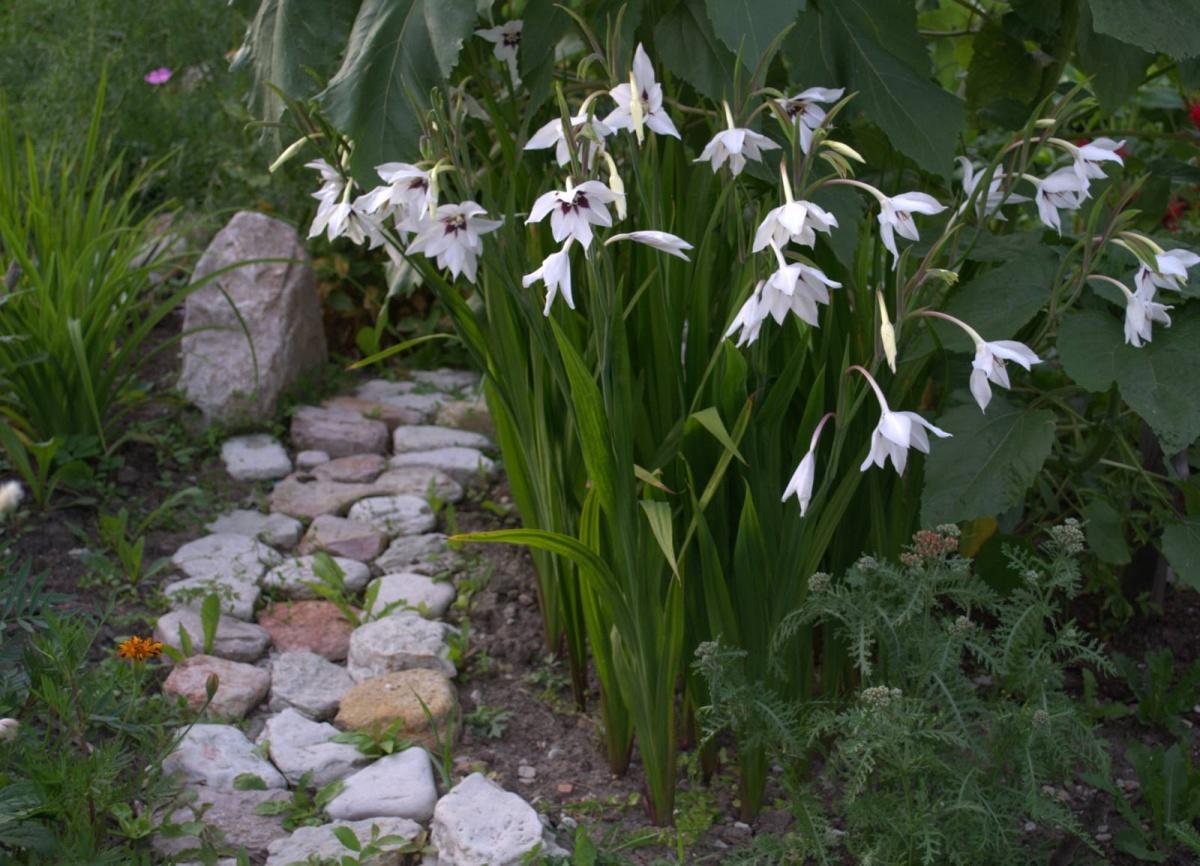
The types of acidanthery
Most of the known species of Acidanthera are not yet cultivated, and there are few places where they can be found. The most popular and widespread species in our region is Acidanthera bicolor.
- Acidanthera bicolor – white flower with a diameter of 12 cm (4.7 inch), with a large black-red spot in the center. Corms about 3 cm (1.2 inch), milky white in a brown layer.
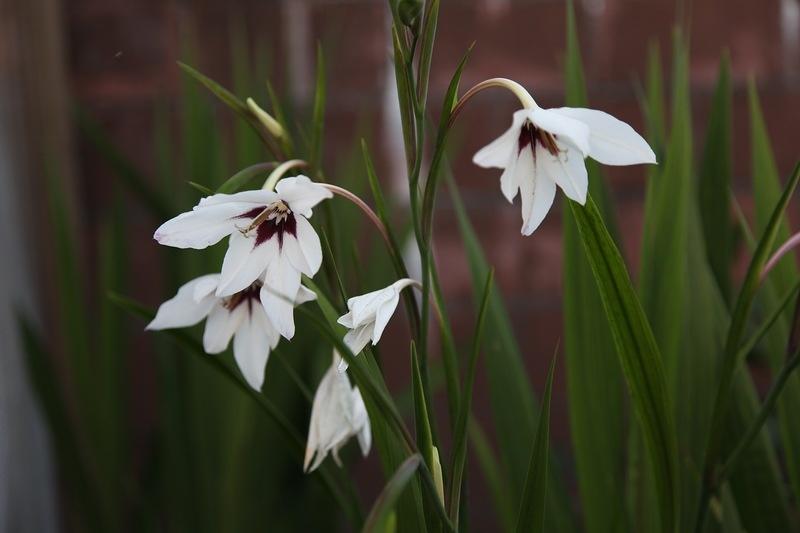
- Acidanthera aequinoctialis is a lateral inflorescence with 5-6 flowers. The flowers are white with crimson spots.
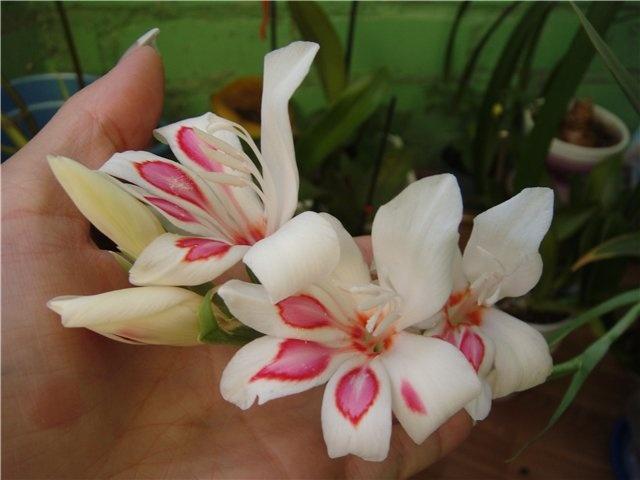
- Acidanthera brevicollis — bright purple flowers with a short tube. It is unknown in the gardening culture, because of its bright color, it is of great interest.
- Acidanthera Candida — white flowers with a strong smell on thin strong stems.
- Acidanthera capensis – white flowers with purple – red veins.
- Fourcade Acidanthera pink-white flowers. Few people know about this in gardening culture, but this species is of great interest to designers.
- Acidanthera graminifolia— white flowers with a purple tint, unknown in gardening culture.
- Gladiolus murielaу — white flowers with purple stripes and a green spot in the center, are not found in gardening culture. Grows on the Cape Peninsula, South Africa.
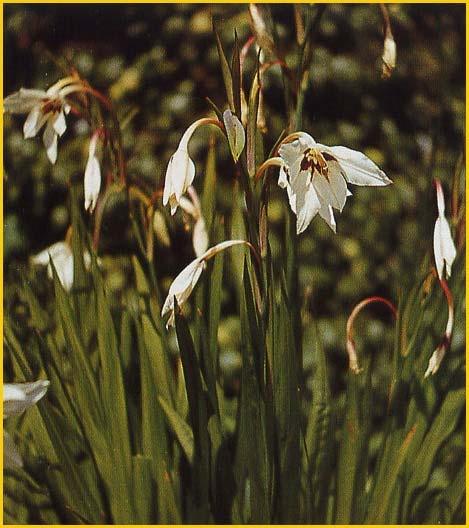
- Acidanthera pauciflora – small plants with thin leaves and 2 flowers. It grows in South Africa. The flowers are white with a reddish tinge.
- Acidanthera platypetala — it grows on the Cape Peninsula.It has about 3 flowers per plant, white flowers with a purple hue. Perianth with rounded lobes.
- Acidanthera roseoalba — It was found in South Africa. It has about 3 flowers of a crimson hue with a spot of white.
- Acidanthera tubulosa – it has about 4 flowers on a long tube. Grows in South Africa.
